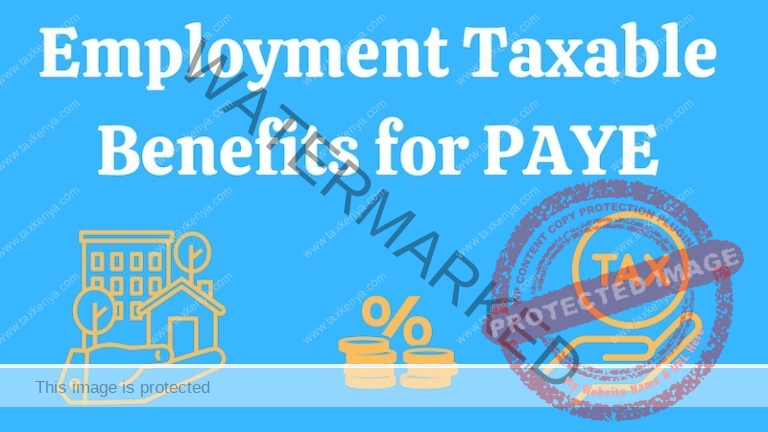Introduction
Every coin has two sides. VAT law in Kenya requires those persons who qualify to be registered for VAT to do so. Likewise, the VAT Law also require those persons who do not qualify to be registered to apply for reregistration without any delay. This post is on VAT de-registration.There is a VAT reregistration process or procedure. The following will be addressed:
- Introduction
- Originators of VAT de-registration
- Commissioner’s decision
- Effective date of VAT de-registration
- Way forward for a VAT de-registered person
- VAT de-registration offences
Originators of De-registration
VAT de-registration can be initiated by:
- A taxpayer who will apply for cancellation of the registration.
- Commissioner who will cancel the VAT obligation from the PIN certificate.
Application for VAT De-registration by a Taxpayer
A taxpayer will apply for VAT de-registration because of any of the following two reasons:
- Termination of business – done within 30 days.
- Low taxable turnover – no time limit for application.
Termination of Business
When there is the termination of business, a person has ceased to make supplies including taxable supplies. The application is done within 30 days from the date the person ceases to make taxable supplies.
The application is done to the Commissioner in the i-Tax platform. The person provides all details regarding the application for example reasons for the application, the date of deregistration etc.
Reasons for Termination of Business
There are various reasons for the termination of a business. The following are some of the reasons:
- Closure of business.
- Sale of business.
- Death of trade.
- Death of business owner (s).
- Legal incapacitation of business.
- Business insolvency.
- Change of status e.g. from a sole proprietorship to partnership etc.
Low Taxable Turnover
Apart from the termination of business, a person can commence the process or procedure for cancellation of the VAT registration because of low taxable turnover. The taxpayer writes to the Commissioner seeking to be de-registered and provides evidence of the low taxable turnover.
The taxpayer must have paid all tax debts and in case there is an application for waiver of penalties it must have been dealt with. Application is done through i-Tax.
Commissioner’s Decision
The Commissioner will make either of the following two decisions:
- Accept the application – the registration is either:
- Put in dormancy status – can be used later – taxpayer to request.
- Cancelled and VAT obligation is removed completely.
- Decline the application – VAT registration is not cancelled:
- Decline with conditions.
- Total decline – person remains registered.
Commissioner’s decision on the application must be in writing. Previously, the taxpayer was required to return the VAT certificate. But currently, VAT obligation is removed from the PIN certificate.
VAT De-registration by Commissioner
A VAT-registered taxpayer can be deregistered from VAT by the Commissioner. VAT reregistration by the Commissioner is because the Commissioner is satisfied the person does not:
- Keep proper records.
- Furnish regular and reliable tax returns.
- Comply with obligations under other tax laws (e.g. income tax, excise duty etc.).
- There are reasonable grounds to believe the person will not keep proper records or furnish regular and reliable VAT returns.
VAT De-registration effective date
VAT de-registration effective date is the VAT de-registration date. This is the date that a person ceases to be VAT registered. The date is specified in the VAT de-registration notice from the Commissioner which is received through an email or post.
The VAT obligation is removed from the PIN certificate and VAT access in i-Tax is deactivated. However, the person is still liable for acts committed or omitted while registered for VAT.
Way forward after De-registration
A de-registered person should:
- Cease to hold out as VAT registered.
- Remove all indications of VAT registration in:
- Invoices.
- Delivery notes.
- Letterheads.
- Tender documents etc.
- Submit a final VAT return.
- Pay any outstanding VAT (principal, penalties, interest etc.) within 15 days.
- Establish and pay any input VAT within 15 days on any trading stocks being held at the time of VAT de-registration if input VAT had been claimed on local and import supplies.
De-registration Offences
There are three main de-registration offences:
- Application for de-registration when required to be registered.
- Failure to apply for de-registration when a person qualifies.
- Charge VAT when de-registered.
On conviction in a Court of Law, the persons will either:
- Pay a fine of not more than kshs 200,000.
- Be jailed for a period not exceeding 2 years.
- Be fined not more than kshs 200,000 and be jailed for a period not exceeding 2 years.
The following is the video for VAT de-registration….
Feel free to send us tax and investments in Kenya questions or topics via email taxkenya@gmail.com that you would wish to be covered on this Website.
Tax Quiz No. 2 VAT De-registration

Question
Your answer:
Correct answer:
Your Answers





